Aquascaping: Theory and Practice
Beautiful aquascapes. How do they do it? What's is the secret? Read on and learn the basics so you can quickly get to work!
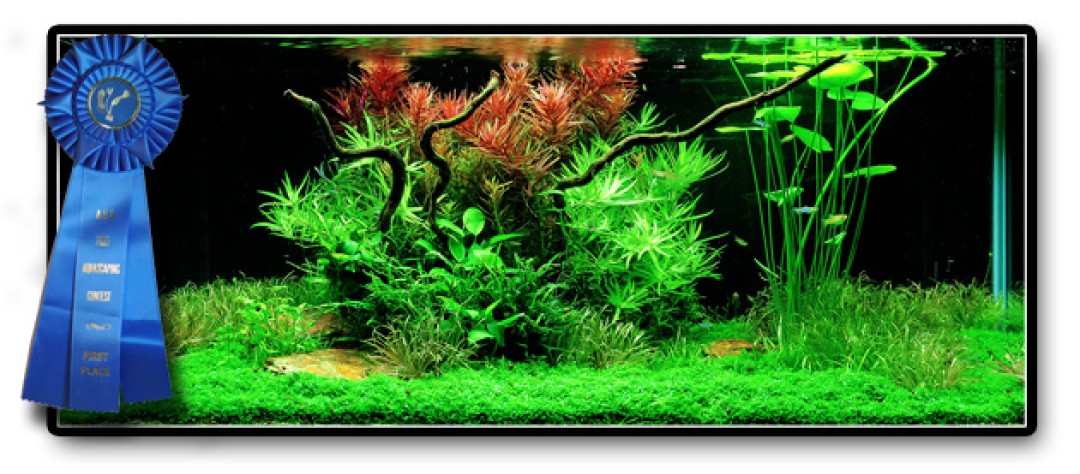
The basics: theory and secrets
First of all, it is important to have good & healthy plant growth in your aquarium. This forms the basis to be able to play happily with plants, stones and wood. But first we must gain some insight into the basic rules and therefore unravel some mysteries that have to do with successful aquascaping!
Secret 1: 0,618 or 1,618 line and unconscious control
Everyone has experienced when placing furniture or a cabinet, we often say "more to the left or right, that's better." Strange really, because we can not rationally explain this but we are unconsciously driven to find this beautiful. This is because the human eye is sensitive to the so-called rule-0.618. This number is not just a number: it is a kind of iron law of nature. Lots of natural elements are built with this "ratio". An often-cited example is the cochlea: the width of the curves becomes increasingly larger with 1,618. Also, the human phalanges are approximately 1,618 larger. Photographers even use this rule and call it the "1/3 - 2/3 rule" to indicate where a strong point in the landscape can best be placed in the picture.
Photo:cochlea with 1,618lines
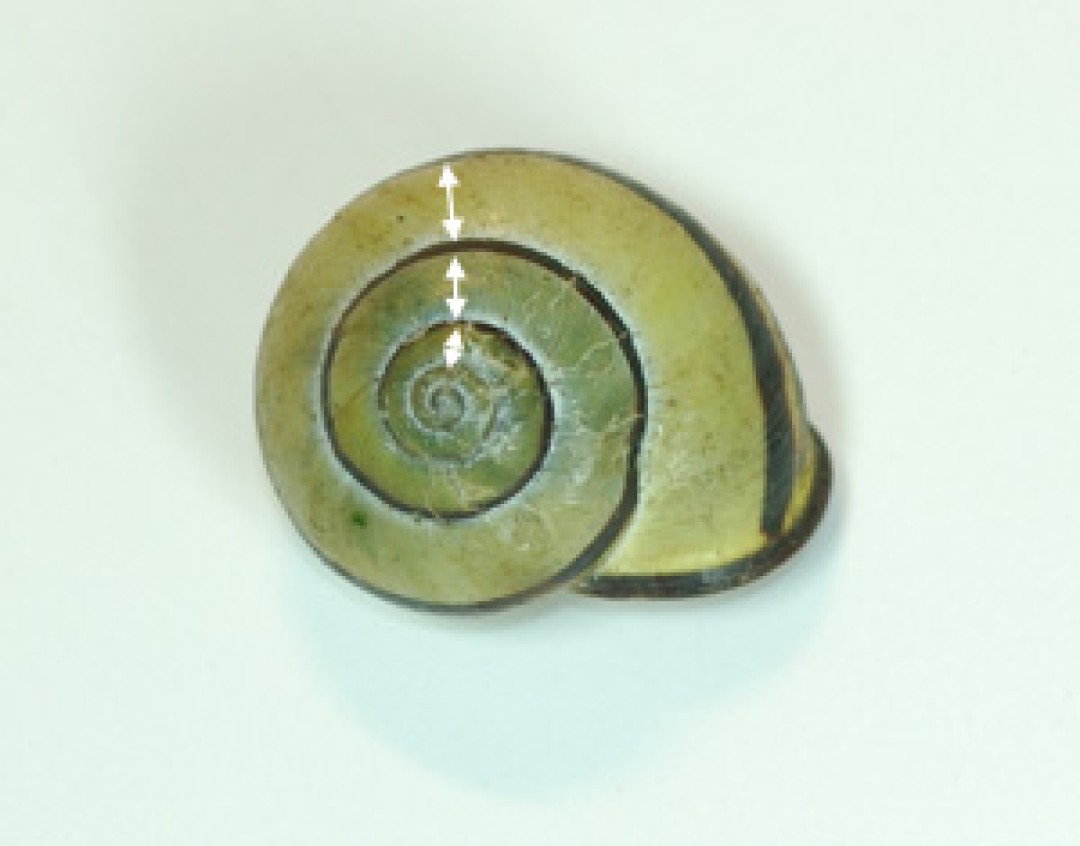
Planted aquarium application: strong points and cutting lines
Now we know that this number is so important, we apply it to the spatial layout of the planted aquarium. This number will form the basis of our layout and forms ALWAYS the guide in case you lose track! In order to make optimal use of this rule, it is important to look at the aquarium as a 3-dimensional object. If we draw 0,618 points on both the front and the side and then draw lines, then there are four intersections that form the so-called strong points. The following calculation example creates some clarity, see pictures 1 and 2:
Picture 1 and 2: Drawing of an aquarium 120x60x60cm with cut lines and strong points.
Calculation example 120x60x60:
Front: 120 x 0,618 = 74cm (2) en 120-74 = 46cm (1)
Side: 60 x 0,618 = 37cm (4) en 60-37 = 23cm (3)
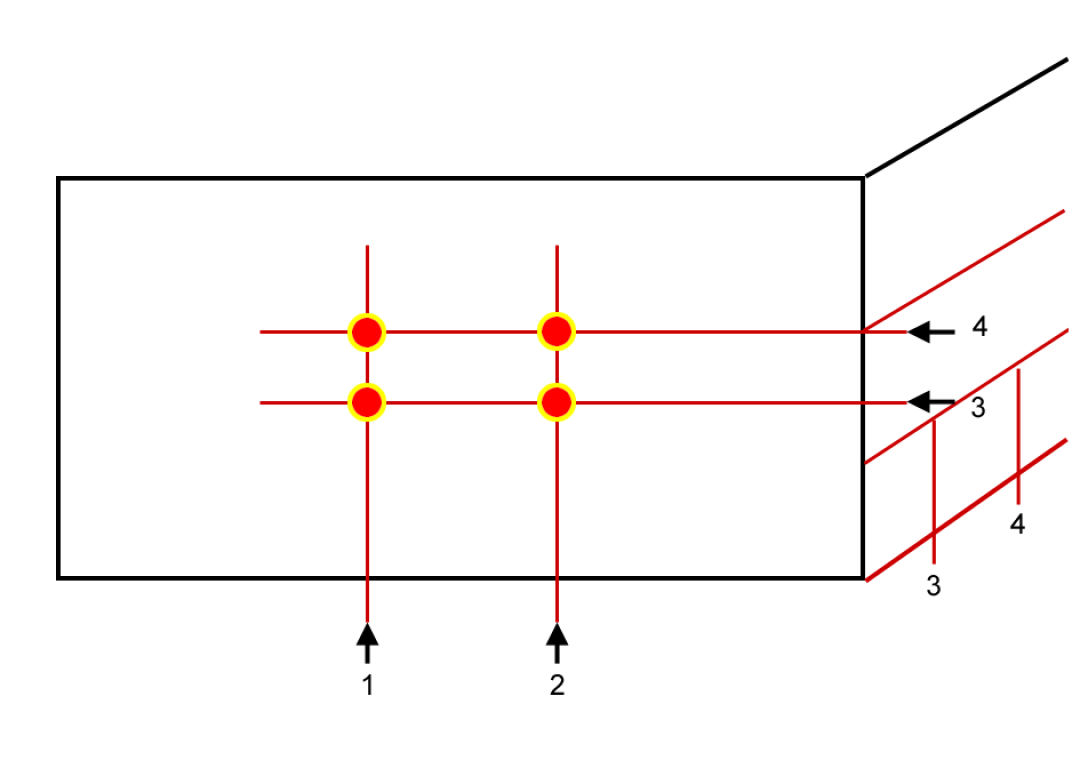
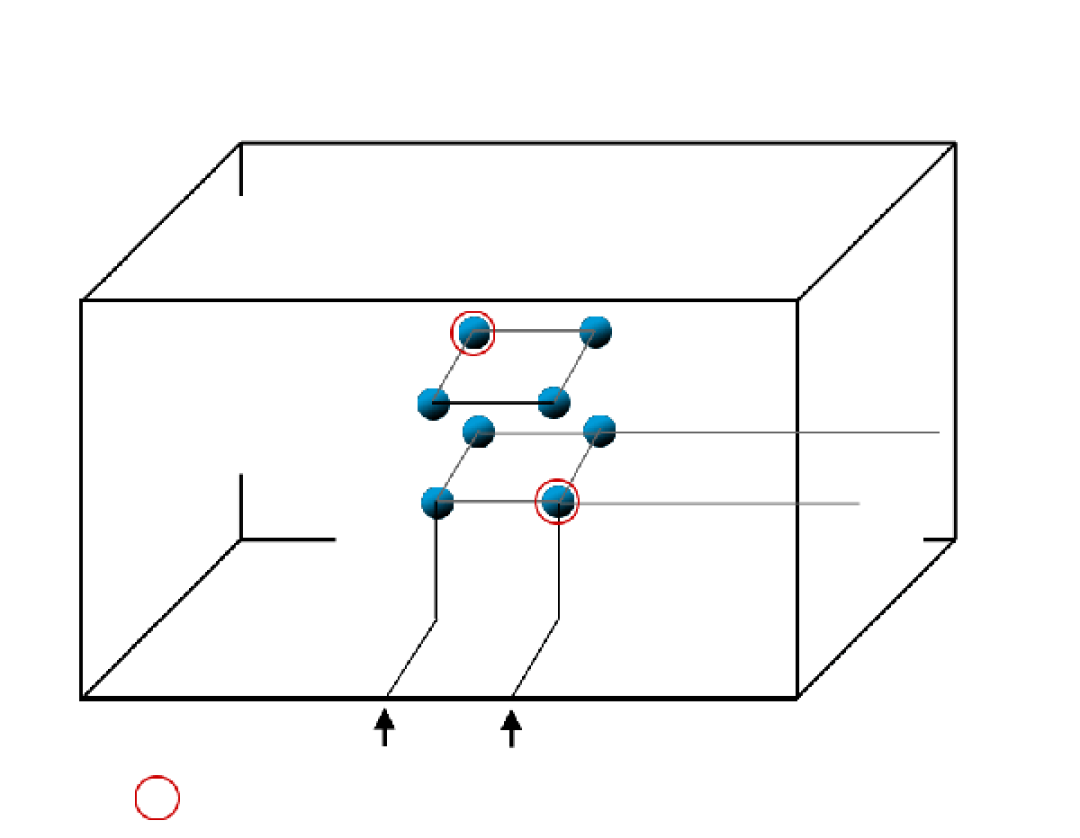
Red circle = important intersection point. And eight intersection points indicated as blue spheres in total.
Both from above and from the sides and front, we now see intersections: These intersections are the strengths that our eye is sensitive and forms the directive instead of so-called strong objects such as stone, wood or a large solitary plant and height.
Although there are eight intersections in total, we normally use only two in a aquarium. In the example (see above photo 2) are two red circles that indicate which points are often used. Also, it is not strange to use only one strong point so that a kind of unity arises between full and empty: stone and wood on a strong pointh versus low vegetation. The cutting lines also indicate immediately which height is ideal for a plant group.
Secret 2: Leading the eye & case study cutting lines and intersections
The human eye has a tendency to look unconsciously along strong lines. We follow the piece of wood and look further back through those lines. Well known is the term 'lines of sight' in architecture and garden design. These lines we can apply in our design to lead the eye to the strong point (see photo below).
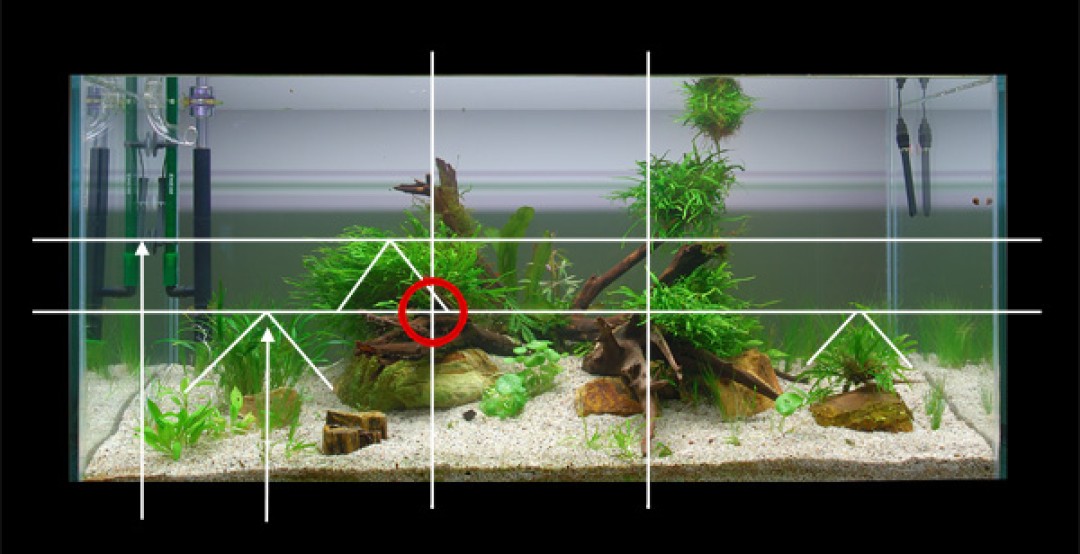
Photo 3: leading the eye along a branch to a strong point. Note the 0,618 frame which has been followed in height well. Red circle = strong point for the eye.
Secret 3: Choosing stone and wood for an aquascape
Everyone knows the beautiful aquariums scaped by Tashiki Amano. Particularly clever put together and often he follows the teachings of Zen Buddhism when decorating. The mini underwater landscapes follow rules to keep balance. Some important guidelines are:
- balance: after a rocky (= full) follows empty space (= empty)
- odd numbers: 3 or 5 stones together
- natural growth of plants
A careful choice of stone is very important to obtain unity. Always use the same kind of stones with the same color & appearance so they can form a (quiet) unit. When using wood follow the rule of thumb: less is more. A few properly placed branches can add more than a whole bundle of sticks that attracs all the attention. Also try to use fine wood and not a single thick trunk.
In particular, the mixing of stone(s) and wood may create problems as it is not easy to bring stones and wood in balance. Often it is a puzzle to put the right pieces together and it takes a lot of time. To gain experience and keep fun it might be better to make a choice between the use of stone orwood.
If you have no experience with aquascapes, watch out for the following:
- Do not use too large stones
- Avoid large pieces of wood
- Avoid using stones and wood in one place
- Use relatively easy plants
- If one plant species do not want to grow and others do: remove this species and do not endless tinkering to get growing. There is always a plant that does not want to do well for some unknown reason.
- Take care of the aquarium regularly and conscientiously: water change, clean windows, remove dead or unsightly leaves, no algae, and so on. This forms certainly the basis for a beautiful aquarium!
Secret 4: dry exercise on a table
If we found a nice collection of interesting stones or wood, it is advisable to take a table and then draw the 0,618 lines [photo 4]. Thus we get a clear picture of where what can be and how it compares themselves in the aquarium. It is best to make a few setups and photograph them, so you will not lose an ideal setup option and compare them easily. After final selection, it is important to prepare the items. Wood is anchored to prevent floating [photo 5] and stones are cleaned.
Photo 4: dry practice on a table with cutting lines.
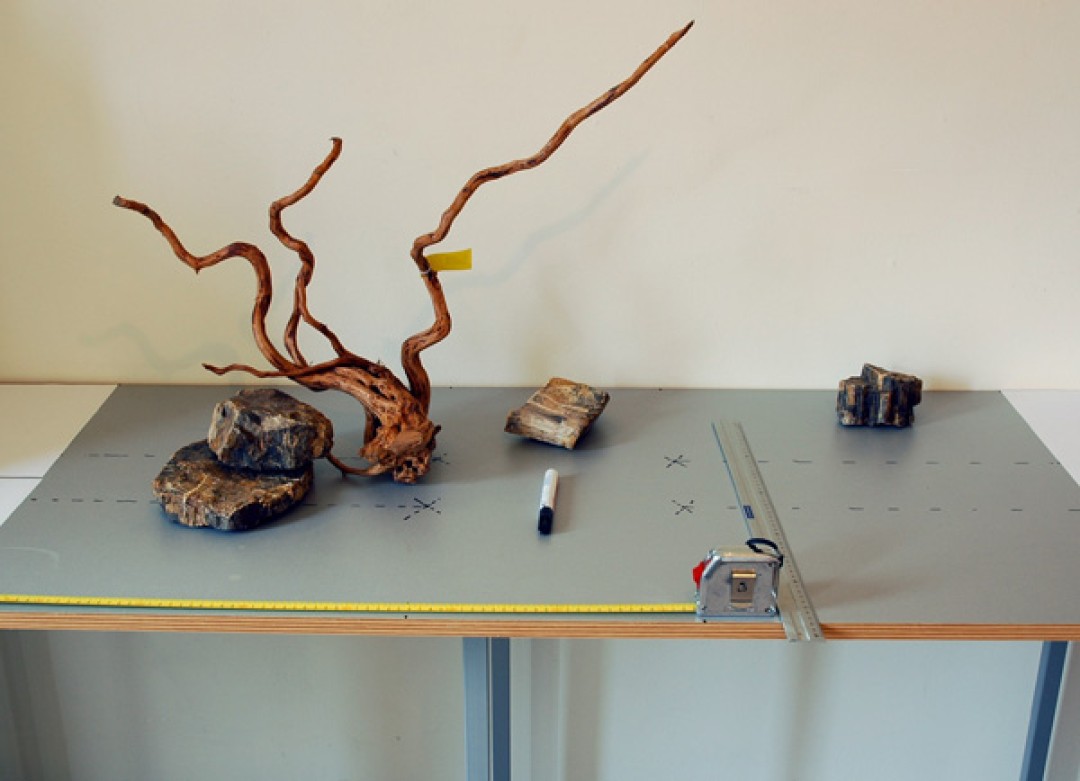
Photo 5: anchoring plants and wood. There is a hole drilled through the rock, and this stone is then at the bottom screwed to the wood. With some nylon thread plants are fastened to the wood.
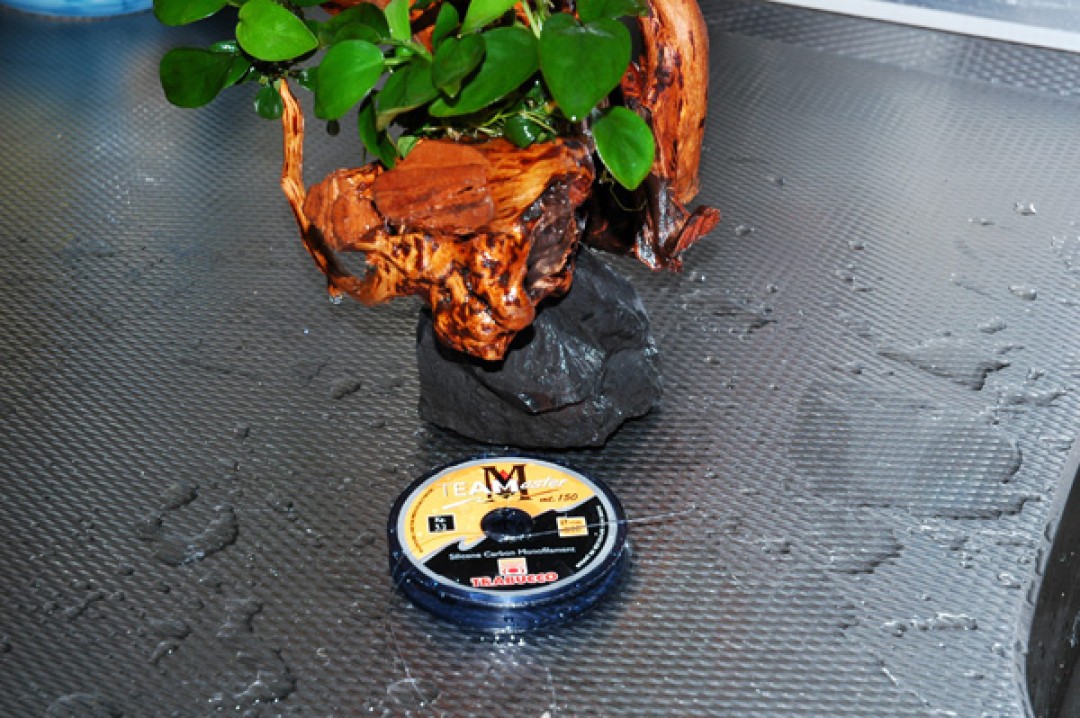
Secret 5: watching others (aquascape) & learn
Always try to learn from beautifully decorated aquariums or aquascapes. Search the strengths, try to discover cutting lines and try to understand why some aquascapes looks nice or even phenomonal. Pay particular attention to detail: there is a nice combination of wood-stone-plant used? Once the base with the aid of the rules, then the details are becoming increasingly important. Look at photo 6 in which even the details are perfected.
Photo 6: details are also important.

The role of fish in an aquascape
In this article, the emphasis lays on design & aquascape and not on fish or other animals. In the so-called aquascapes fish are often seen as added value to complement the aesthetic element (the beautifully decorated aquarium). This does not mean that they would not be interesting and be elected to the pure color, but a motley collection will be avoided. And of course you can also turn it around and create beautiful aquascape for your interesting fish or other animals!
Case study: winner AGA 2005
Theory is always fun, but the practice is the most important teacher. A wonderful example is the development of the final winner of the aquascaping contest of the Aquatic Gardeners Association (AGA) in 2005. Especially since in the beginning it was just was an ordinary aquarium. The following series of images shows chronological the development of the aquarium from scratch.
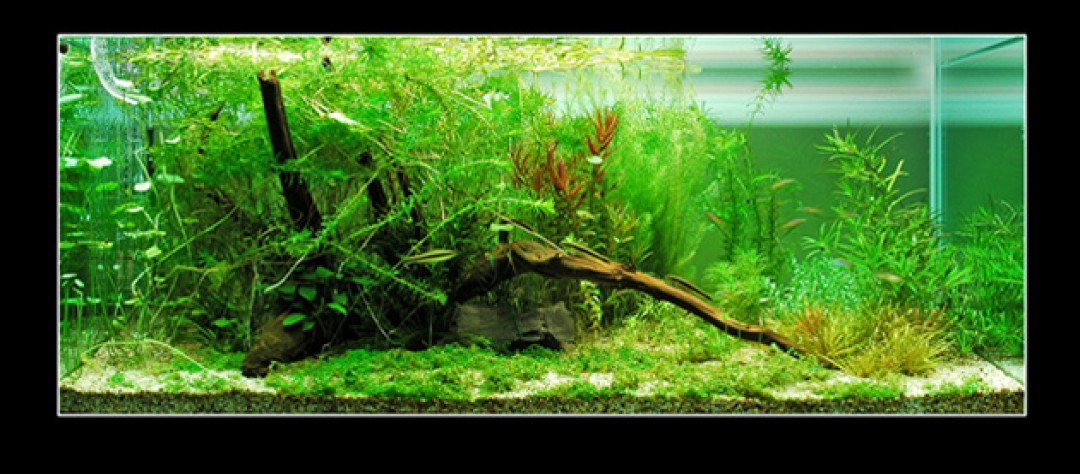
1. The winner of the AGA in 2005, was initially not such a beautiful planted aquarium. Simply, just an aquarium with some random wood and stones. Note that a (too) large piece of wood is used. Of course there were ideas to organize it better, but we were still searching for the right pieces of wood and stones. This shows that even professionals sometimes lack good material and that they must make every effort to find the right pieces.
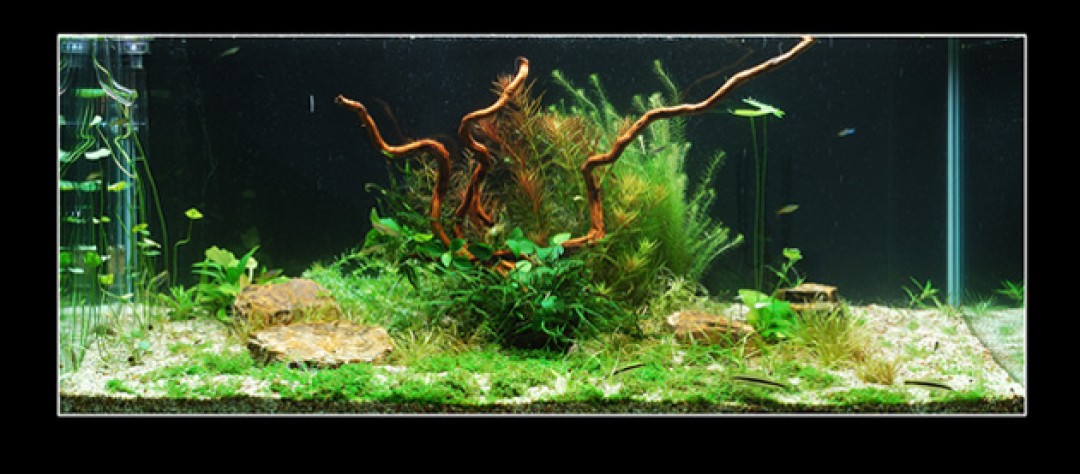
2. After finding the right stones and wood (in about 2 months! Purchased in a local store.), it was time to decorate the aquarium otherwise. Pay attention: the use of wood and stones is not exaggerated. Thin branches and simple small stones form the base.
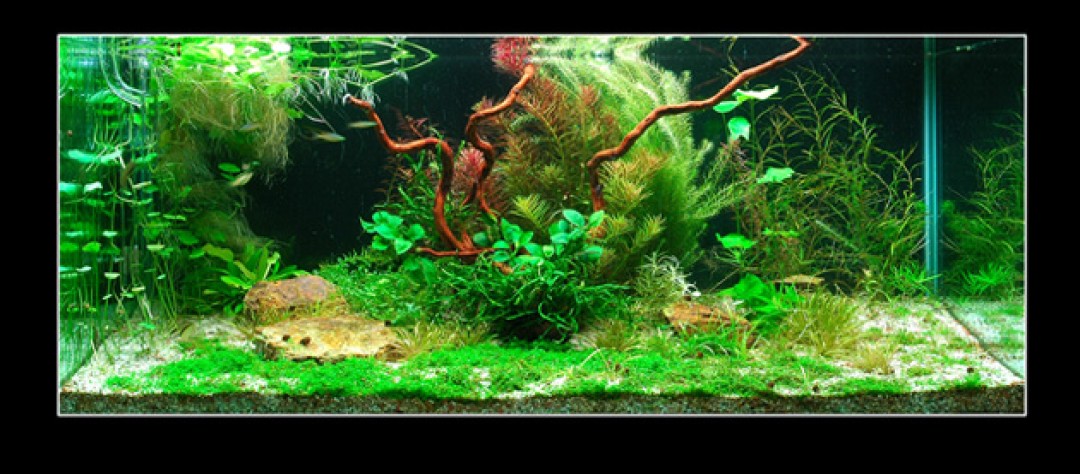
3. It was decided to put the wood in the middle with a number of plants around it, like an "island" aquascape with 'empty' space around it. The stones are already placed.
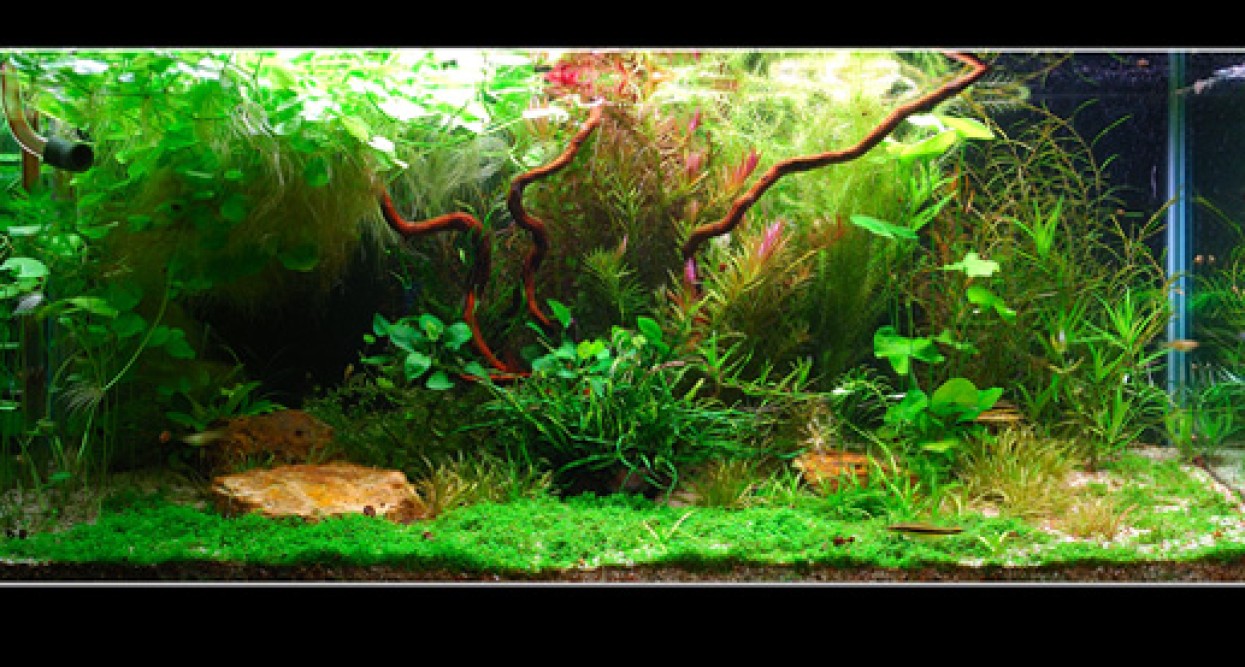
4. Good and healthy plant growth.
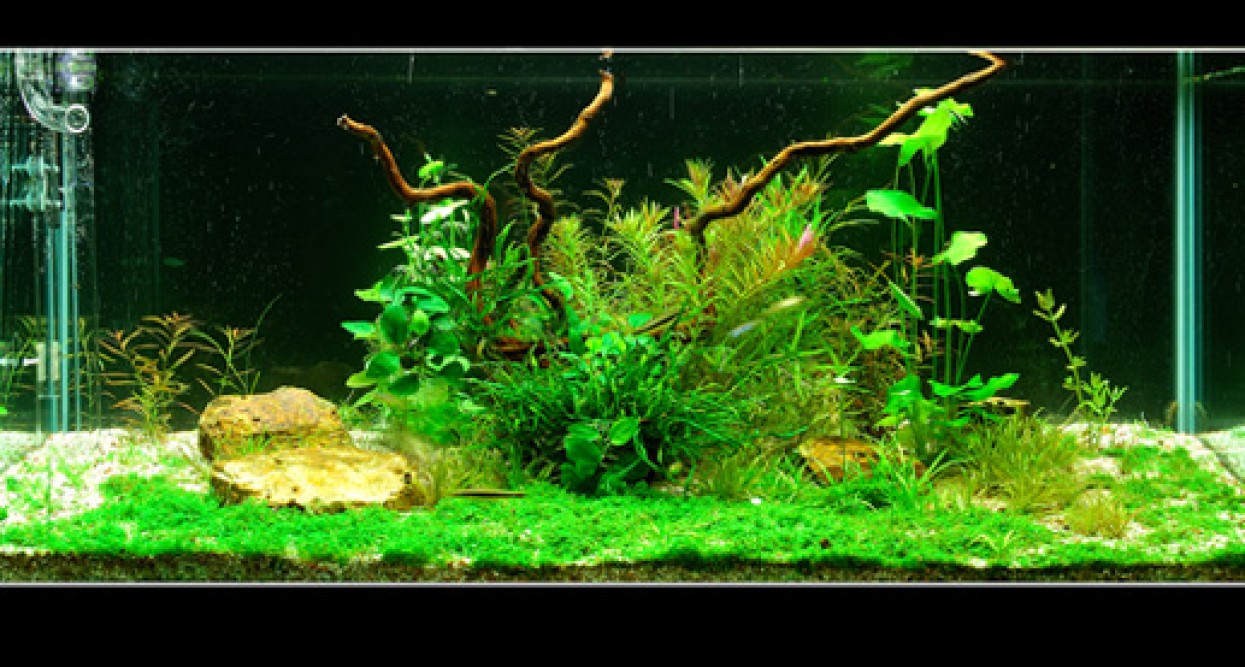
5. The plants grow well, but something is missing. It was decided to follow the basic rules (0.618) and put the wood with plants on the strong lines. The so-called "island plants with wood" therefore shifted a bit to the left in order to reach the focal (stromg) point.
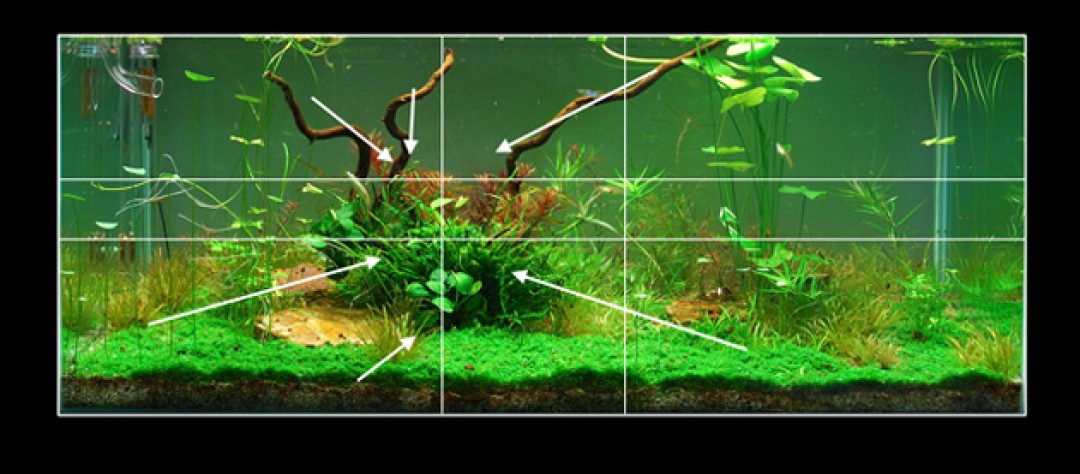
6. In this photo you can clearly see that the rules are followed and the 'feeling' is better at this placement. Also note the height of plants: following the cutting lines.
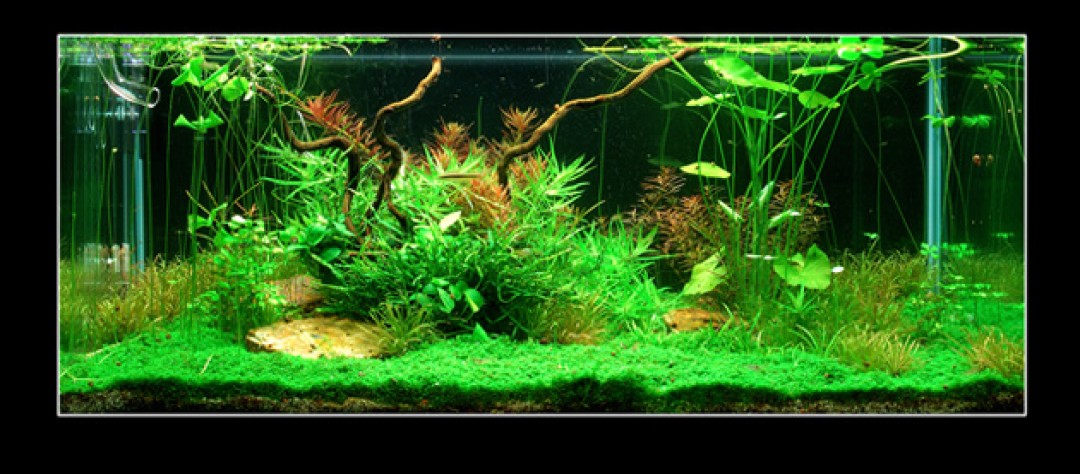
7. The aquarium matures further and decided to deviate slightly from the rule to make the aquascape more interesting and unique. Theoretically the green lotus should be kept lower indeed. But precisely this deviation gives the aquascape just the little extra tension that makes it a unique whole.
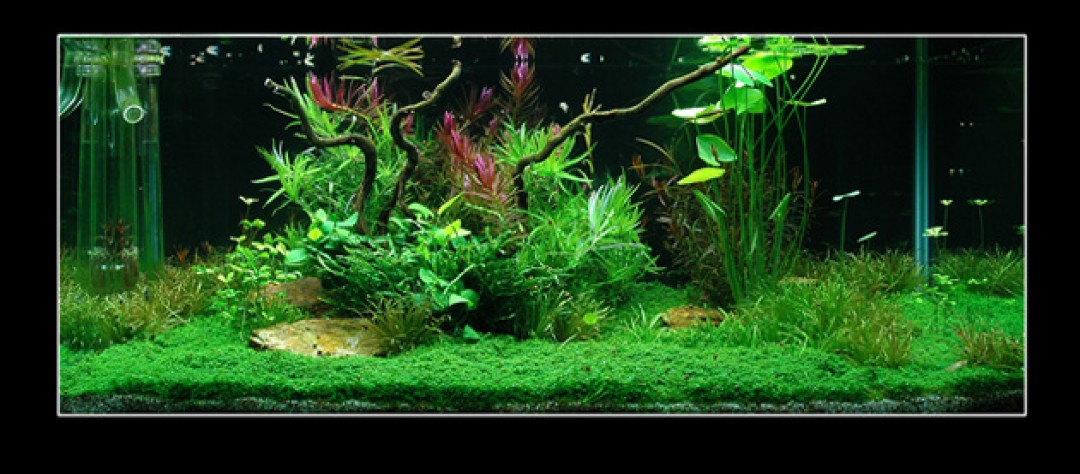
8. The aquarium has been pruned and the last photo before the AGA competition is being taken until the plants have reached the surface and are full in color.
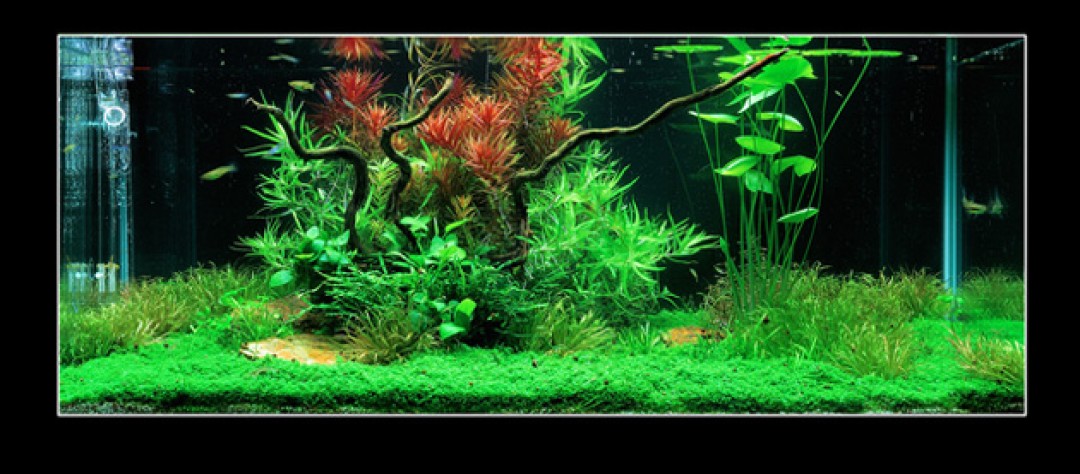
9. The aquarium / aquascape is almost ready for the photo. For the final picture the filter tubes (transparent left) will be removed temporarily.
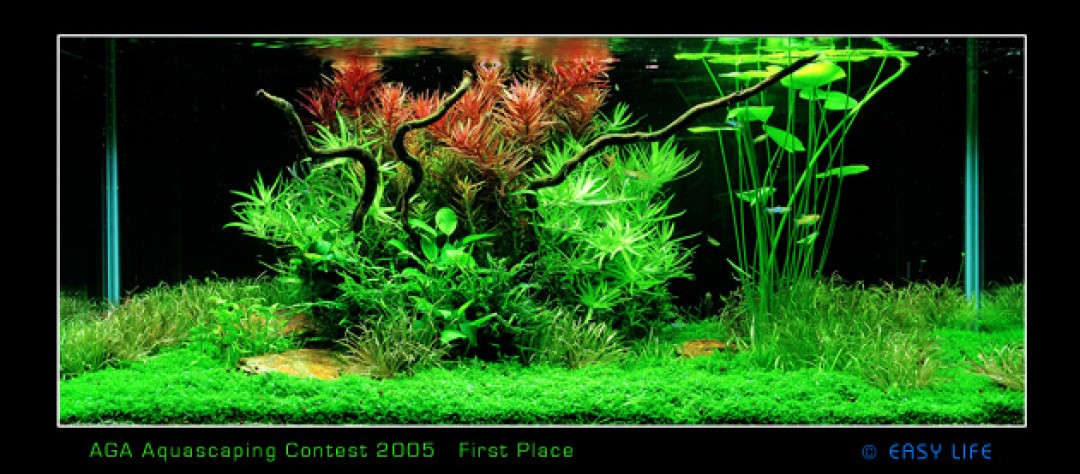
10. Final result: photo used for the AGA 2005, front view.